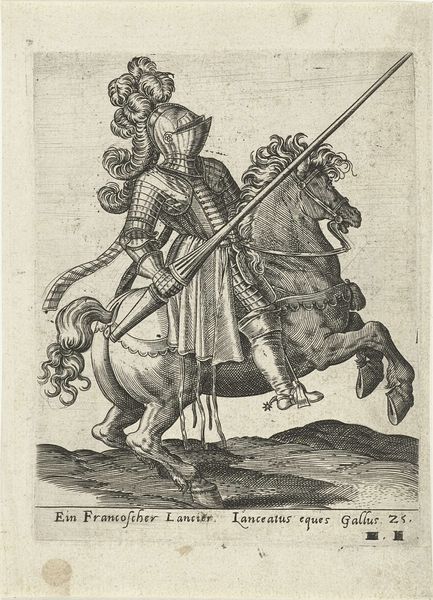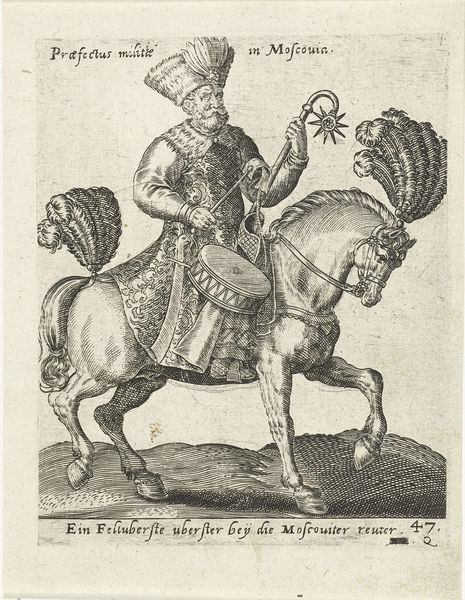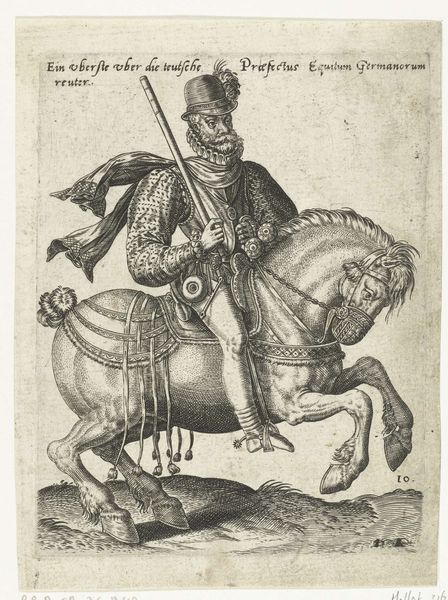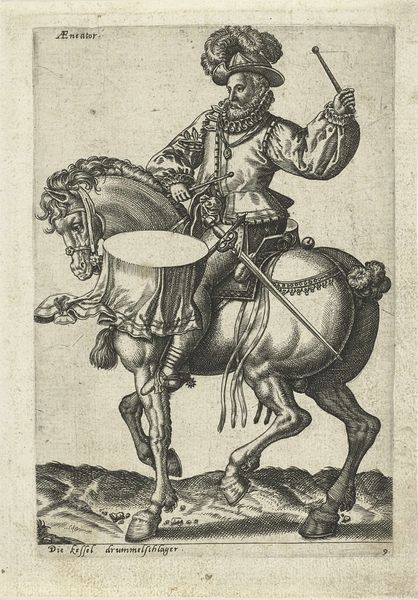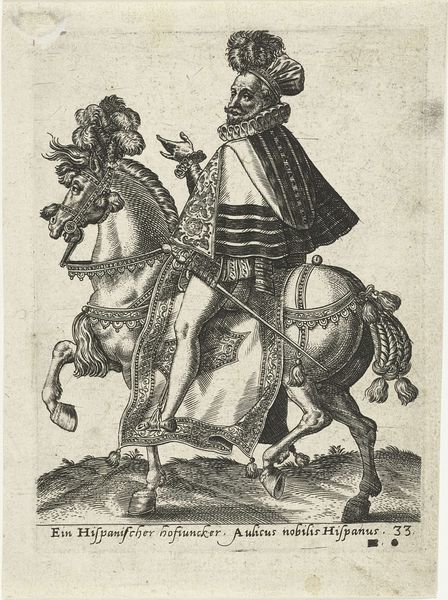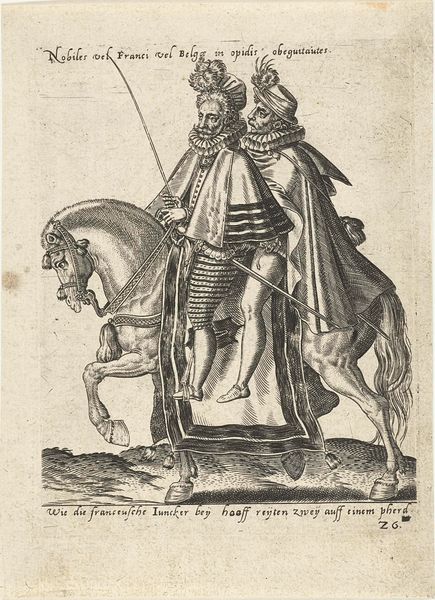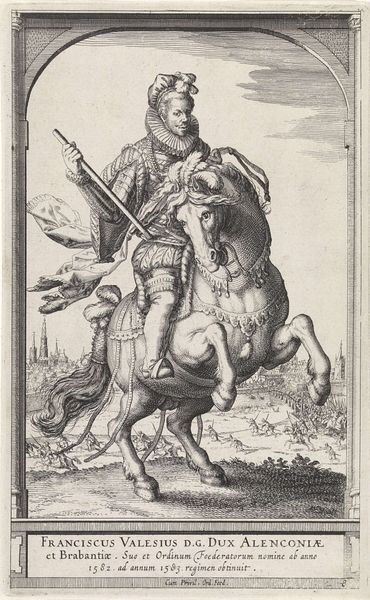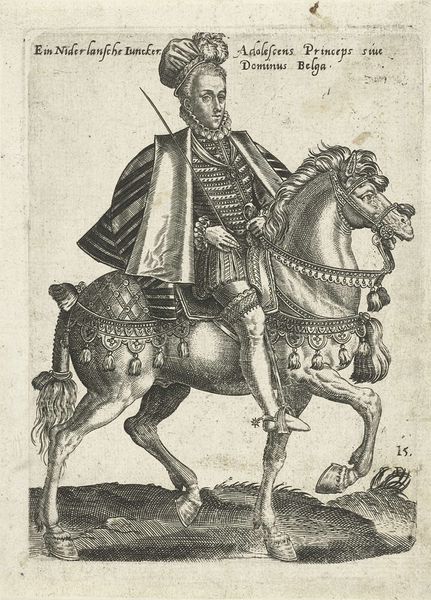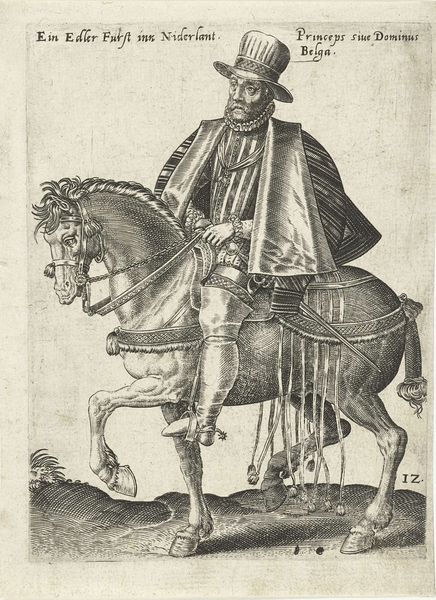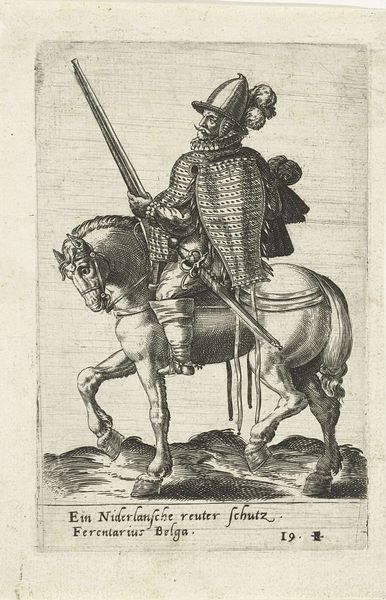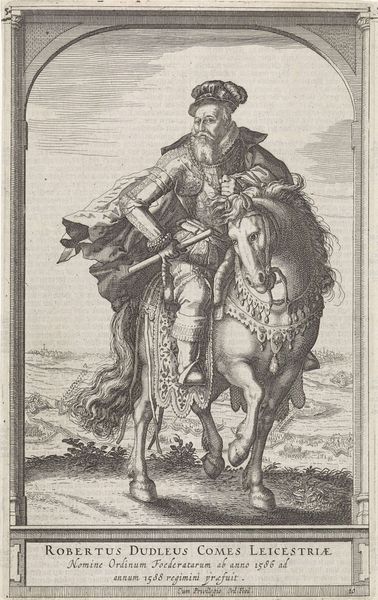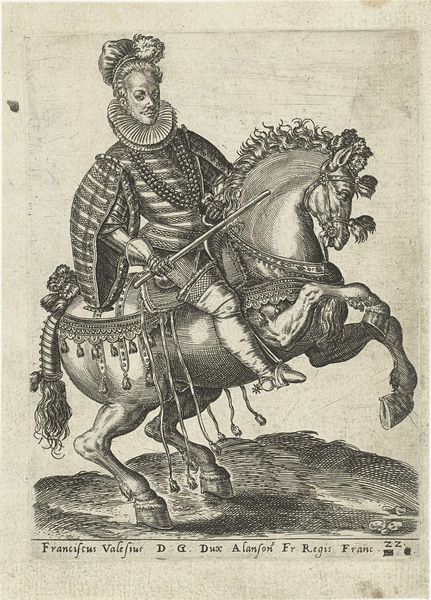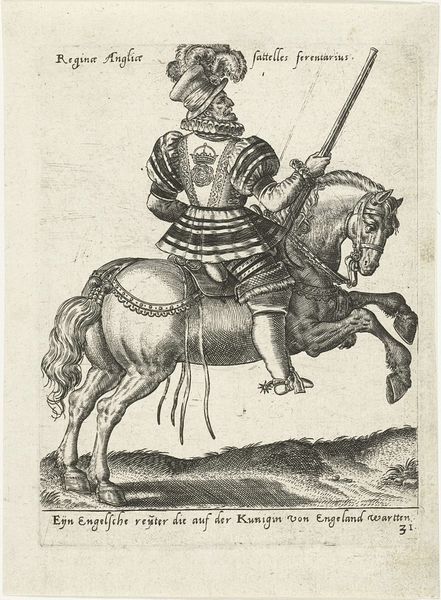
print, engraving
#
portrait
#
medieval
# print
#
old engraving style
#
figuration
#
line
#
history-painting
#
engraving
Dimensions: height 140 mm, width 98 mm
Copyright: Rijks Museum: Open Domain
Abraham de Bruyn created this engraving, titled "Ierse ruiter," sometime in the late 16th century. The composition immediately strikes us with its dynamism. The rearing horse and rider are set against a stark, neutral background, emphasizing their forms. The lines are meticulously etched, creating texture and depth that draw the eye. The engraving depicts an Irish horseman, or "ruiter," in a style that is both detailed and idealized. De Bruyn's use of line work here isn't merely descriptive, it’s evocative. Note how the texture of the horse's coat contrasts with the rider's flowing cape. This opposition creates a sense of movement and drama. The formal elements here suggest more than just a portrait. They create a representation steeped in the cultural codes of the time, reflecting early European views of Irish identity. The visual presentation asks us to consider how such images shaped perceptions and contributed to larger discourses about cultural difference during this period. What do the choices of attire and weaponry signify? And how might they destabilize or reinforce contemporary values?
Comments
No comments
Be the first to comment and join the conversation on the ultimate creative platform.
